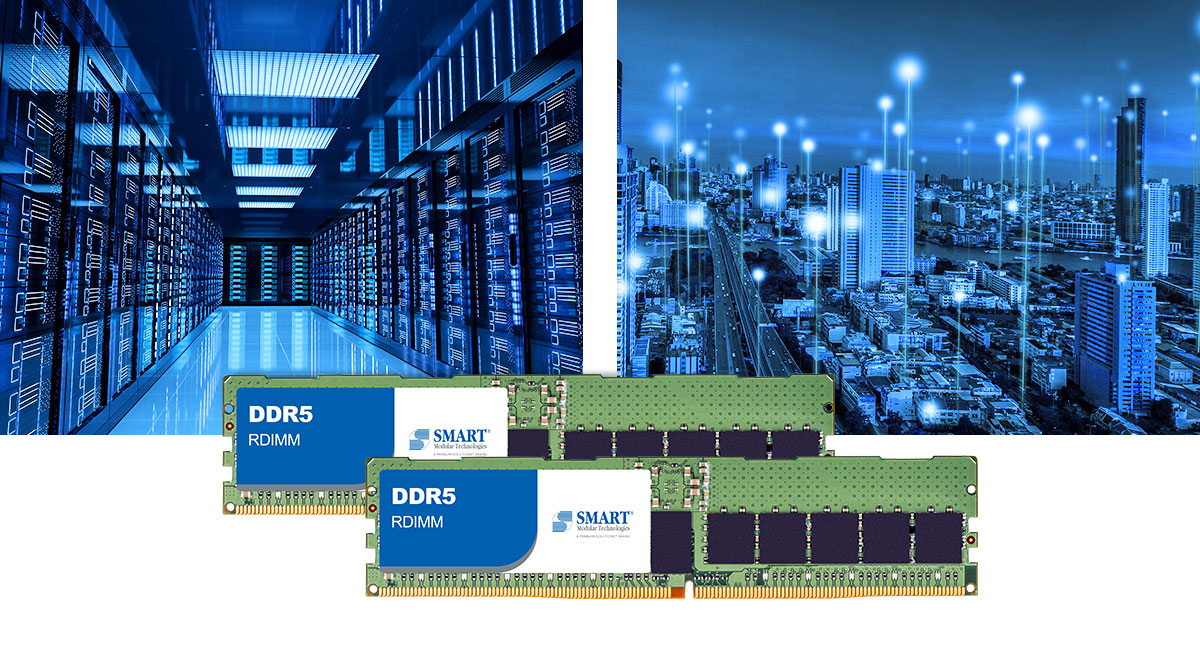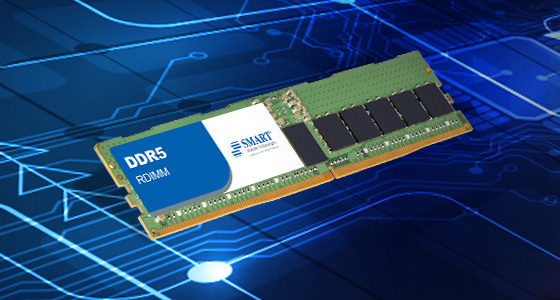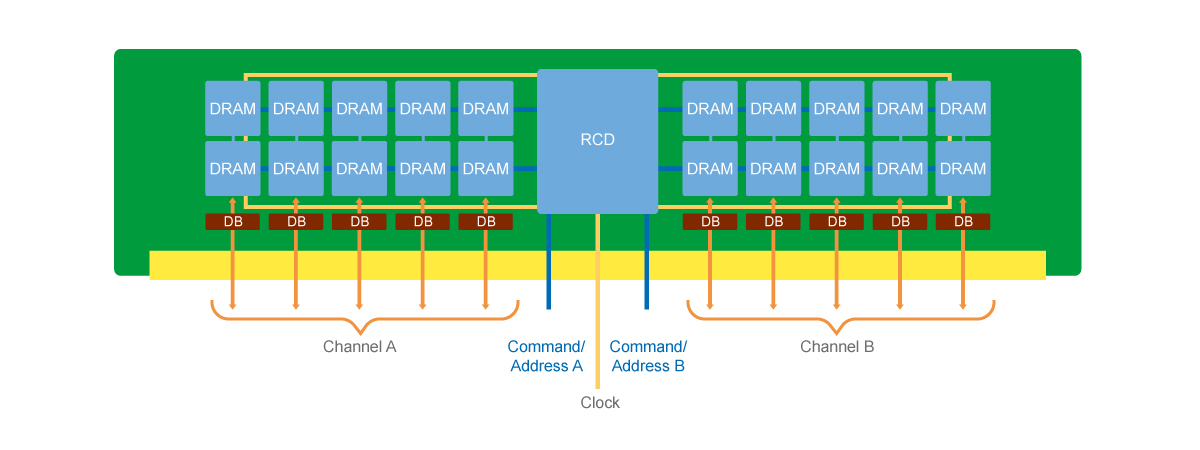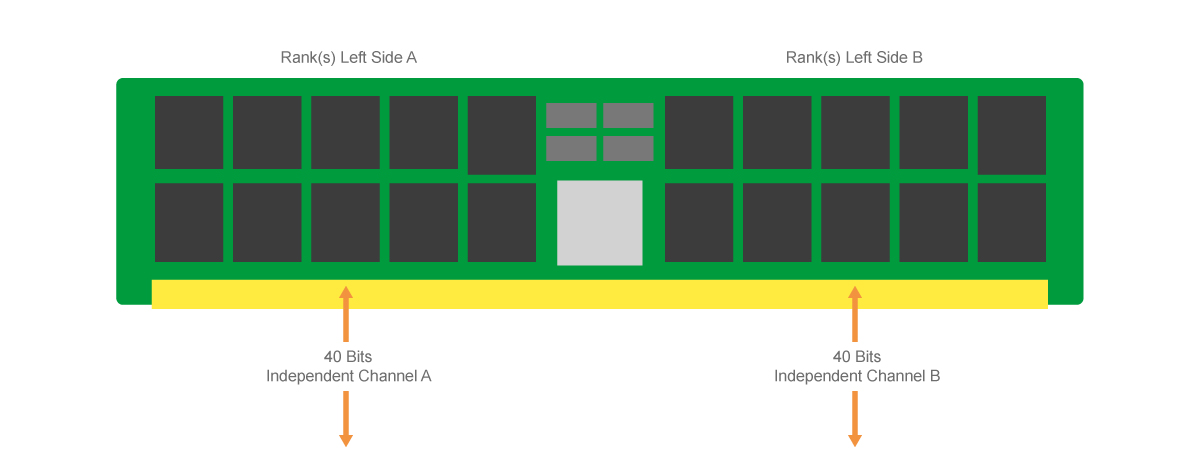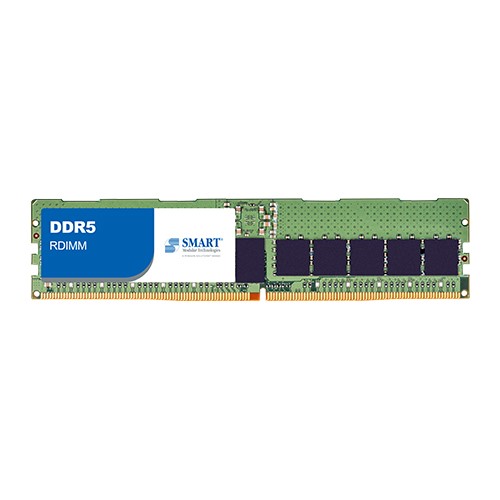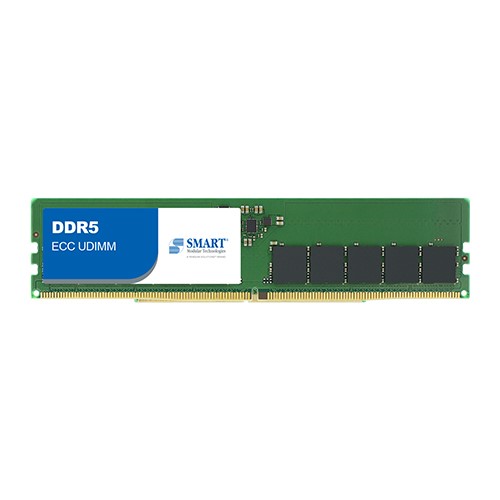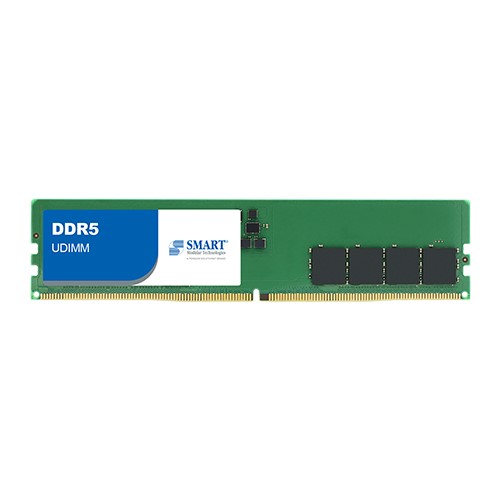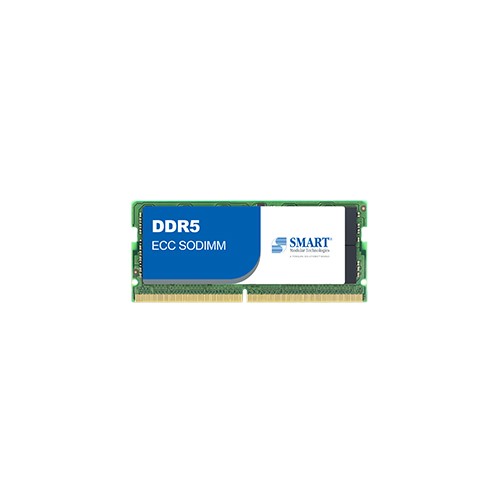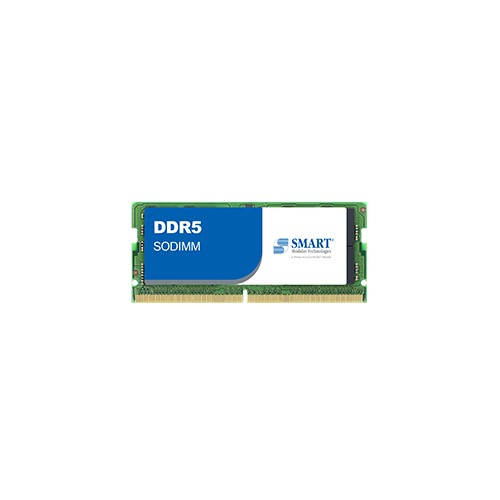SMART's DDR5 industrial memory modules are designed to meet increasing needs for efficient performance in a wide range of applications including cloud computing, and data center processing. DDR5 industrial dram improves scaling performance without degrading channel efficiency at higher speeds. This increased performance is achieved by doubling the burst length to BL16 and bank-count to 32 from 16. A DDR5 DIMM utilizes two 40-bit fully independent sub-channels on the same module.
New Power Architecture for DDR5
A major change is the power architecture. With DDR5 DIMMs, power management moves from the motherboard to the DIMM directly. DDR5 DIMMs will have a 12-V integrated voltage regulator on DIMM. The regulator distributes the 1.1 V VDD supply, helping with better signal integrity and reduction of noise.

